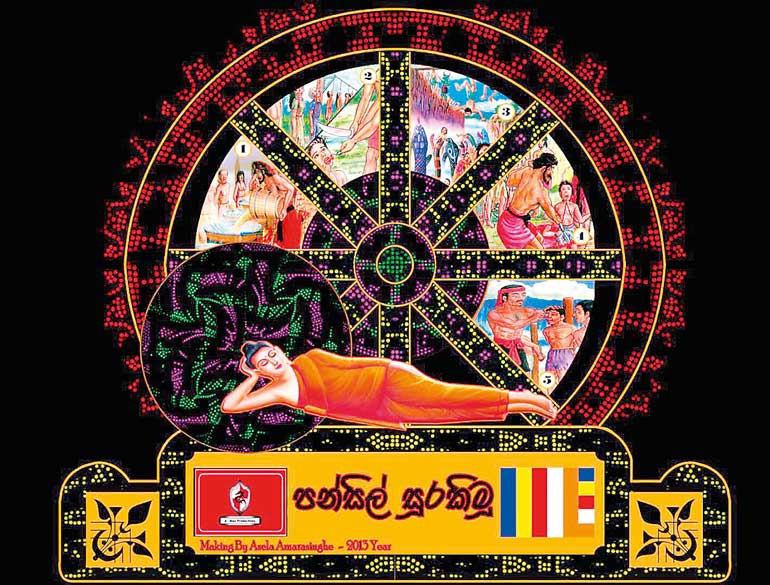Monday Jan 05, 2026
Monday Jan 05, 2026
Saturday, 28 May 2016 00:00 - - {{hitsCtrl.values.hits}}
 This year’s Vesak celebrations would certainly have been affected by the unprecedented misery caused by rain and floods. Most of the regulars who had made it a habit to come to the city with their families to “see Vesak” (I am reminded of the popular song ‘Yaman Bando Vesak Balanna’) would not have been in the mood to do so. Most kids would have felt disappointed since they look forward to the outing to see the colourful paintings in the giant pandals, the constantly-changing lighting, the ‘kerakena koodu’ and other decorations.
This year’s Vesak celebrations would certainly have been affected by the unprecedented misery caused by rain and floods. Most of the regulars who had made it a habit to come to the city with their families to “see Vesak” (I am reminded of the popular song ‘Yaman Bando Vesak Balanna’) would not have been in the mood to do so. Most kids would have felt disappointed since they look forward to the outing to see the colourful paintings in the giant pandals, the constantly-changing lighting, the ‘kerakena koodu’ and other decorations.
A news report mentioned that though the Colombo Municipal Council had issued permits for 488 ‘dansalas’, there were only 152 in the city this year. Since the organisers usually collect funds weeks ahead, it’s interesting to know what would have happened to the collections. Though they were expected to give the money for flood relief, I wonder how many did so. There is nothing to prevent them from pocketing the money since everyone contributes as charity.
It was rather humorous to read that in Kandy some persons caught transporting 200 bottles of liquor (the labels in the photograph indicated they were bottles of arrack) on Vesak Day had said that they were going to sell them at two ‘dansalas’. We had never heard anything being sold in a ‘dansala’ leave aside liquor! Obviously a bright spark would have made it up on the spur of the moment.
Looking back, many years ago Vesak was celebrated in a more sober manner suitable for the occasion. The devotees observed ‘sil’ on the specified day and went sight-seeing the following night. It was mainly the pandals that attracted the crowds. We stood at a convenient stop and listened to the Jathaka story illustrated in the panels in dialogue from coming over the sound system. Although policemen were seen around, they hardly did any crowd control. ‘Koodu’ was not in vogue then except one or two huge ones. As the years went by, ‘olu bakkas’ came on the scene where a few danced on a stage wearing large masks. Musical shows were another item that was introduced later on.
‘Dansalas’ served a simple rice and curry meal in the old days. Soon there were ‘fried rice dansalas’ and ‘noodles dansalas’ – all done with good faith. In place of the simple sheds, ‘dansalas’ came to be large, decorated ones more or less similar to the village ‘magul maduva’ at weddings in the past.
Youngsters had make-shift ‘dansalas’. They stopped pedestrians and vehicles and offered ‘saruvath’. For those who walked miles to see the Vesak decorations, it was a most welcome drink.
Talking about music, although lights were the main element in the pandals and a hearty meal in a ‘dansala, Buddhist devotional songs were played all the time to be heard from a fair distance. The most popular song heard everywhere was ‘Buddhang saranang gachchami’ sung by Mohideen Baig – the voice we enjoyed for over six decades. The song is from ‘Anguliamla’ – the Indian film dubbed in Sinhala screened way back in 1963. To this day the song takes precedence over all other devotional songs and it has contributed in no small measure for Baig to become a musical legend.
He was Mohamed Rafi of Sri Lanka in an era that every second song in a Hindi film was sung by Rafi. With the advent of the Sinhala cinema, almost every local film producer picked Baig for playback and even after other popular singers like Dharmadasa Walpola and Jothipala came on the scene.